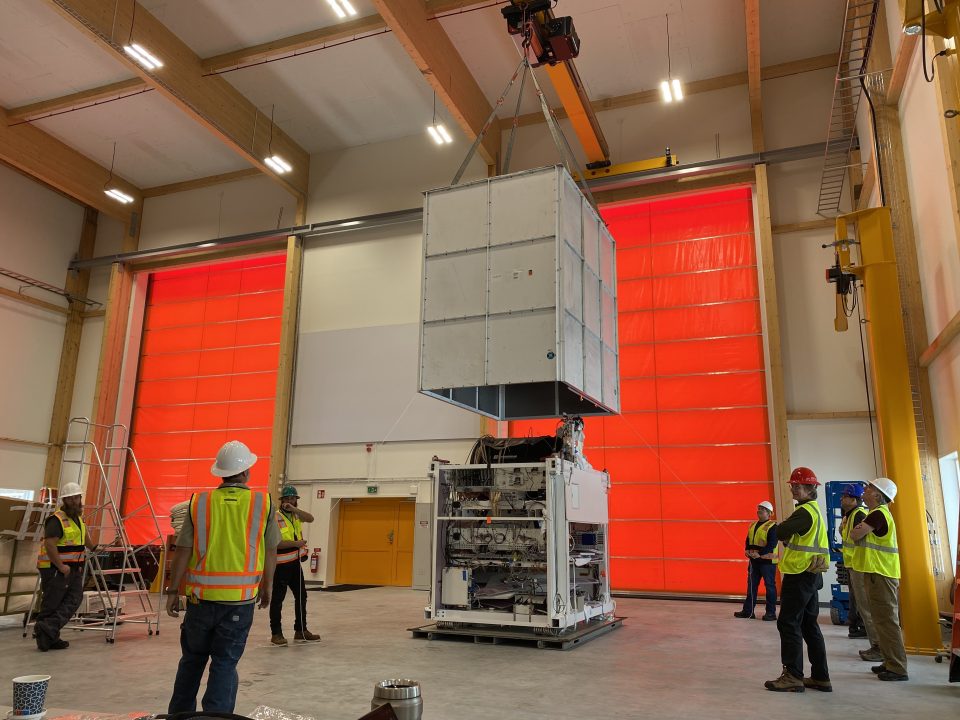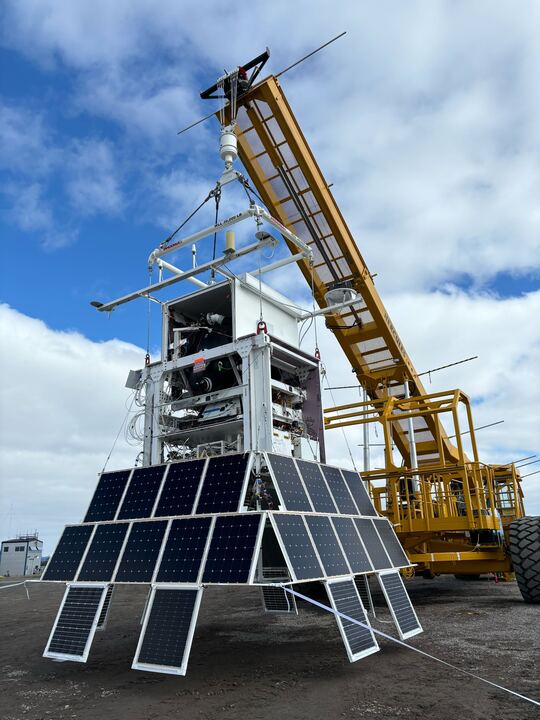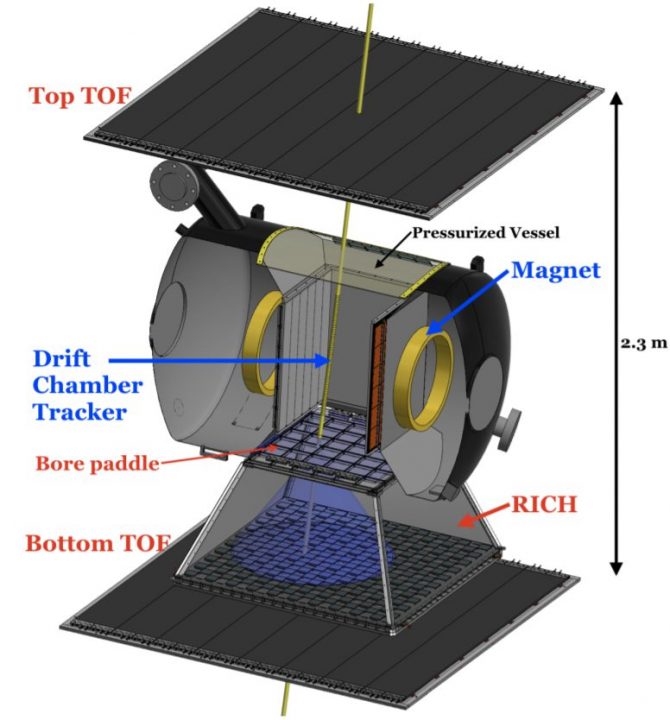News & Events
June 10, 2024
Successful flight for HELIX


The High-Energy Light Isotope eXperiment (HELIX) collaboration has had an exciting few months. The team in northern Sweden assembled the experiment payload in May and kept a close watch on the Arctic weather. When steady conditions were observed, the team prepared for launch and on Monday, May 27th, the entire process took place and was live streamed to YouTube.
Above: The custom container that protected the HELIX payload during shipping is removed in preparation for launch.
The flight path HELIX took from Kiruna, Sweden, to Ellesmere Island in Northern Canada over the course of 6 days, 8 hours and 27 minutes. The instrument recovery team, including prof. David Hanna (McGill) is currently working with NASA to get to the landing site and recover the instruments.
The experiment differentiates the isotopes beryllium 9 and beryllium 10 and measures their ratio. Because of beryllium 10’s 1.4 million-year half-life, the ratio of it, compared to the stable beryllium 9 isotope, will give a good indication of how long these nuclei have been traveling in the galaxy. The age of cosmic rays is a missing piece to understanding the recent discoveries of cosmic ray fluxes, including the positron excess.

This illustration (NASA’s Goddard Space Flight Center Conceptual Image Lab/Michael Lentz) of the Zero pressure balloon HELIX will use in Earth’s upper atmosphere is featured in a Scientific American article published last week. The article details the significance of the data HELIX intends to collect. It also highlights why balloon flights, while shorter in duration, improve mass resolution compared to NASA’s Alpha Magnetic Spectrometer by using a much more powerful magnet that can be refuelled across multiple launches.

The experiment is outfitted with solar panels that will keep HELIX’s 1-tonne payload (top) powered during its flight.
Read the Queen’s Gazette article “Searching for cosmic rays 40 km above ground“.

The HELIX detector is comprised of several components with specific roles enabling HELIX’s isotope differentiation. For a full breakdown of the instrument, visit the HELIX website at http://helix.uchicago.edu/instrument.html
